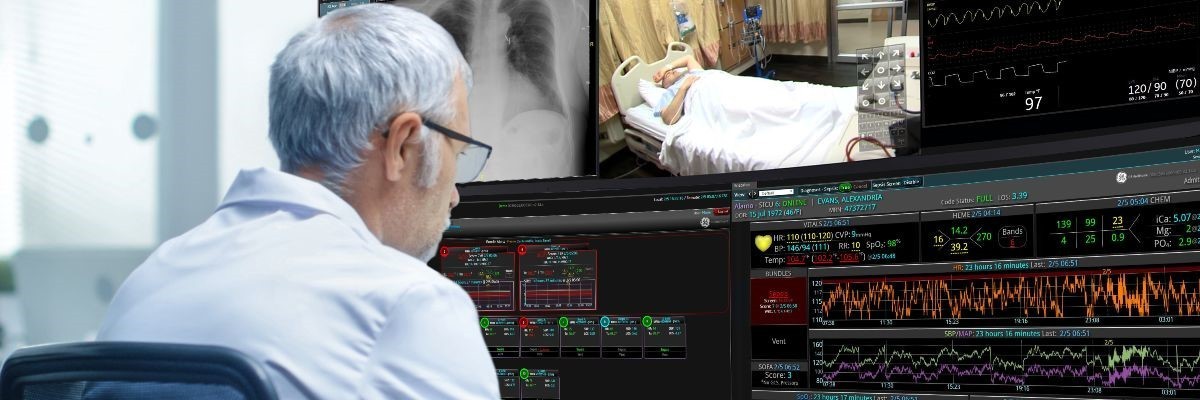Oregon Health & Science University (OHSU) is the first system in the world to test the GE Healthcare MuralTM Virtual Care Solution, a software solution that brings the real-time HL7 data feed from clinical devices together, allowing clinicians to easily access the status of multiple intensive care unit (ICU) patients in one central place.
OHSU piloted the Mural solution in their own health system with the goal of connecting physicians and nurses with critical care expertise to areas of Oregon where that expertise may not be readily available. OHSU is providing telemedicine consultation to several hospitals in the state and plans to upgrade to the cloud-based solution, which is expected to be fully integrated into OHSU’s daily operations by spring 2021.
“It became very clear early on [in the pandemic] that the virtual ICU concept we already had in place to enable critical care expertise to rapidly reach a patient in a remote location would be a good tool to utilize in this crisis,” said Matthias Merkel, M.D., Ph.D., Senior Associate Chief Medical Officer, Capacity Management and Patient Flow, OHSU Health.
Mural will allow OHSU to drill down into each patient data set based on OHSU’s defined prioritization; help clinical care teams take a closer look at an individual patient’s vital signs in real time; help manage hospital-defined protocols; collaborate with bedside clinicians and view patients with audio-video technology; and access information in their electronic medical records (EMR) all from one technology platform.
Convenient access to EMR information
OHSU will be able to quickly obtain patients' information. While most systems can display basic EMR reports, Mural also displays trends from other sources, such as telemetry and monitors, pulling all available data together, which makes it more efficient for clinicians by offering it in one location.
Audio-video connectivity and data visibility
Nurses are tasked with documenting patient data in nursing flow sheets during spot checks, which can lead to data gaps of several hours. With Mural, patient data can be updated every minute and include multiple data points by device type.
“We will deploy this technology into all of our ICUs so that we have A-V connectivity and data feed connectivity,” said Merkel, “which will allow us to develop very different surge plans should we need to deal with a high number critically ill patients in a short period of time.”
Mural’s audio-visual capability allows health care specialists to remotely interact with the bedside clinician in the patient’s room. This gives another, more personal level of insight to the patients' condition, which can be an additional aid to clinical decision support.
Granularity of data to prioritize of patient care
Mural offers more granularity of patient data--added volume, timeliness, and aggregated display--so, clinicians have access to multiple data points to prioritize patient care based on hospital-defined protocols.
Customizable, hospital-defined scores and protocols
The OHSU health team will use Mural to drill down into each patient data set based on its defined prioritization. The Mural solution allows hospitals and health systems to customize their own protocols based on their parameters.
“We learned quickly that there are tools that can help us to connect, and in health care, that is a revolution,” said Merkel. During a crisis, OHSU was able to pivot how they delivered care -- with the help of Mural -- and was still able to to help ensure their high standard of care delivery. The flexibility provided by the Mural solution for clinicians could result in a more sustainable and effective way to deliver care for the future.
Portions of this article previously appeared in “Connecting the Docs: This Tool Pulls in Reams of Data and Presents it to Remote Critical Care Specialists to Virtually Support Patients During the Pandemic” published on GE Healthcare Insights.





